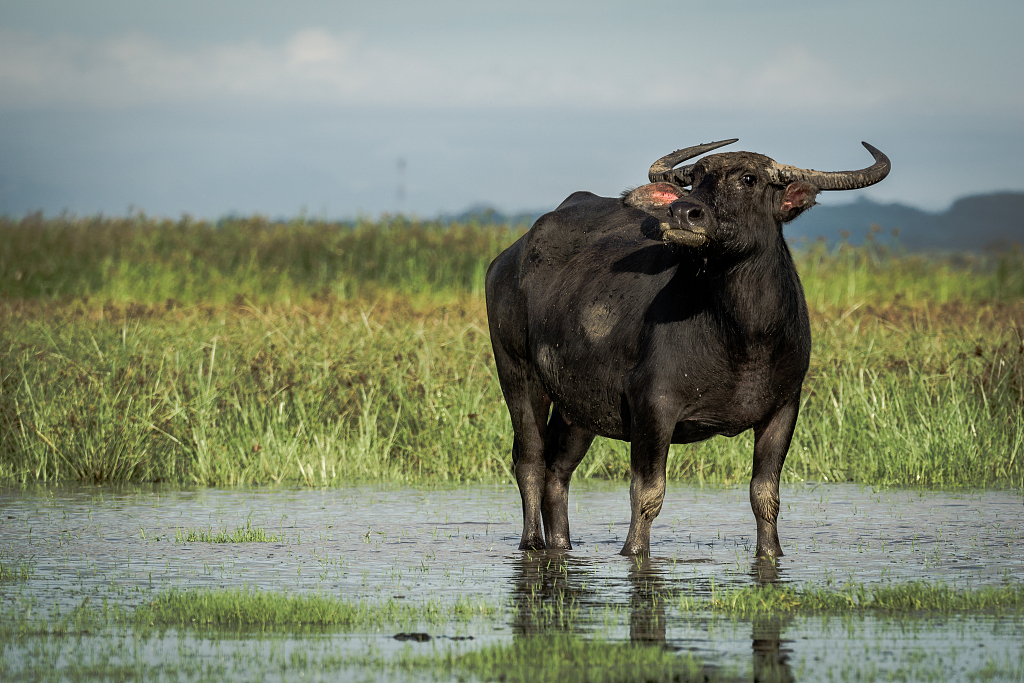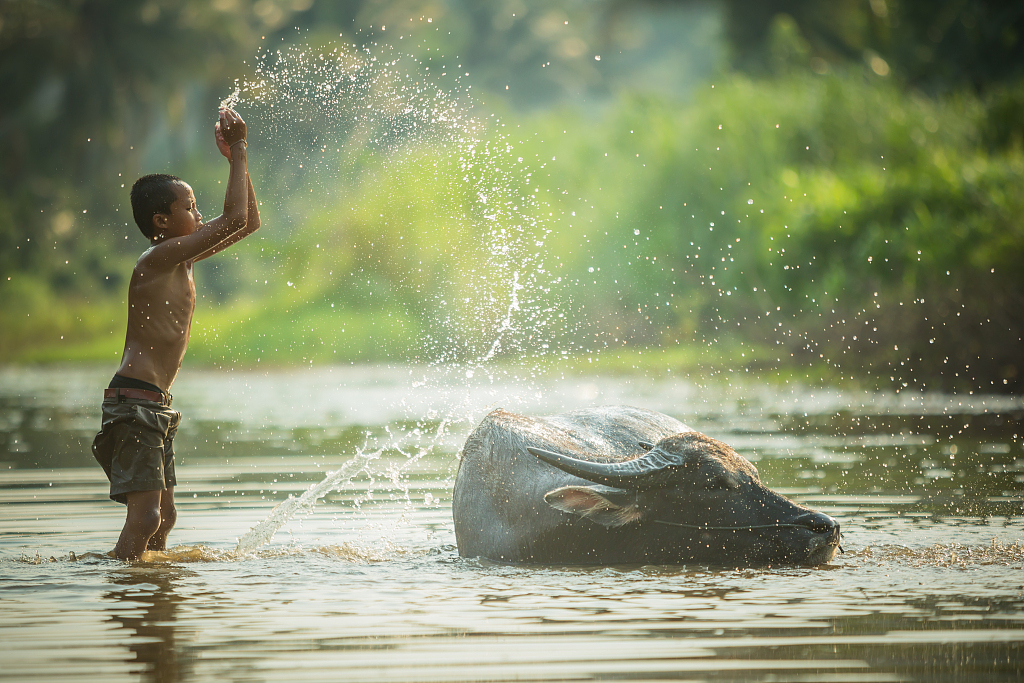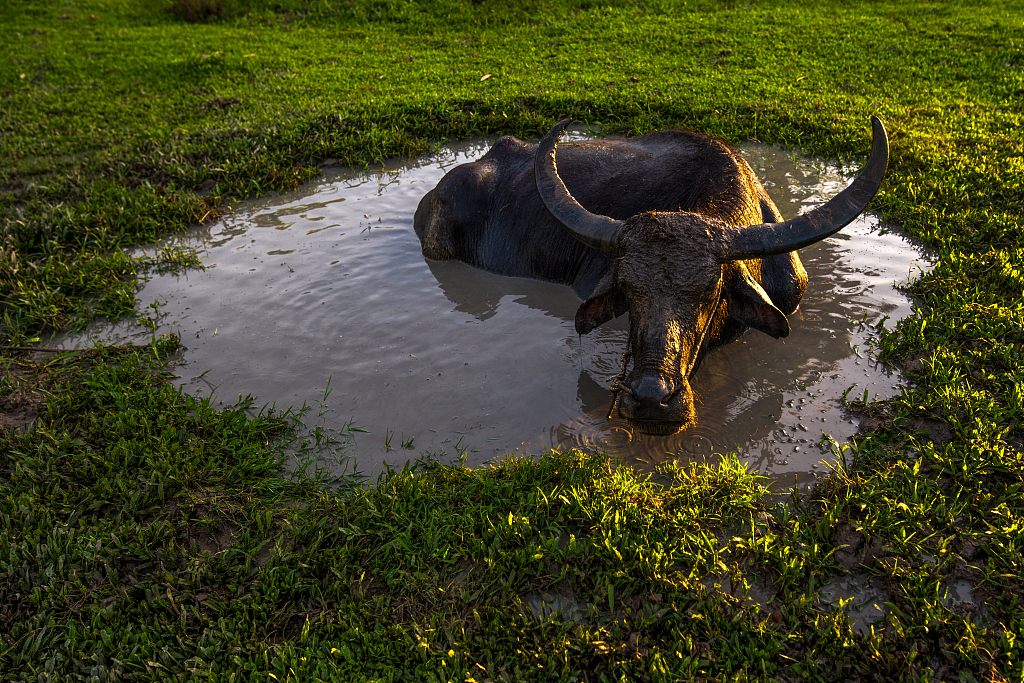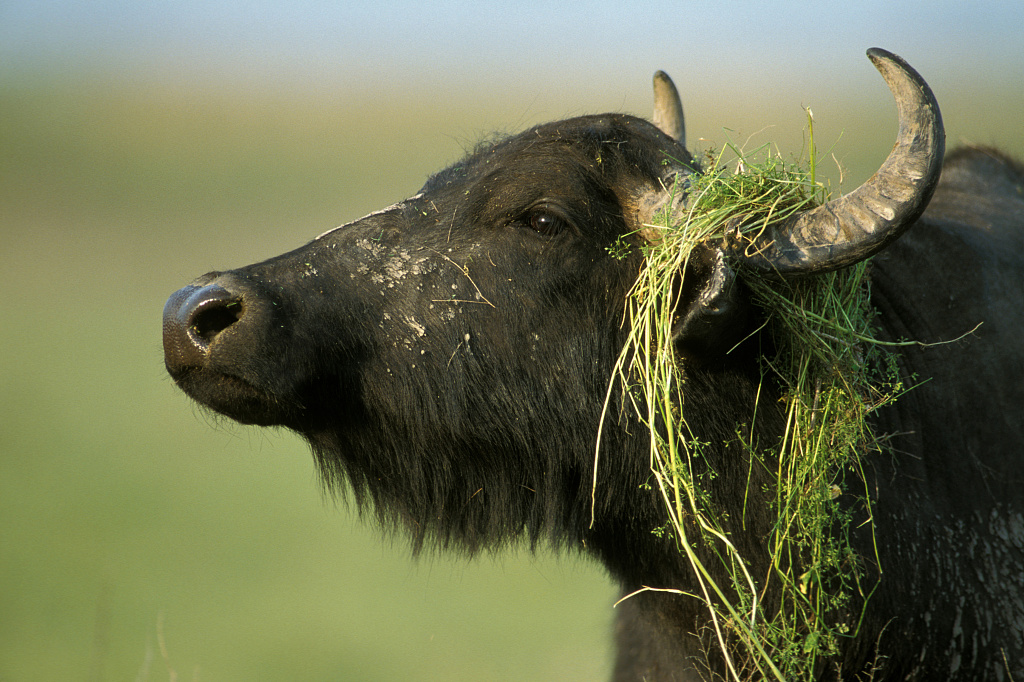The water buffalo is also known as domestic water buffalo or Asian water buffalo. They are found in the Indian subcontinent, Southeast Asia, and China. There are two extant types of water buffalo: the river buffalo which is mainly found in the Indian subcontinent, and the swamp buffalo, which can be found in Southeast Asia and along the Yangtze River in China.

A water buffalo in Thailand. /VCG
A water buffalo in Thailand. /VCG
Water buffaloes have a thick skin, which means they cannot perspire efficiently. Therefore they choose to stay in the water to cool their bodies, giving it its name. Water buffaloes are well-adapted to hot and humid climate, and is a common livestock in the tropical and subtropical zones.

Water buffalo is a common livestock in tropical and subtropical areas. /VCG
Water buffalo is a common livestock in tropical and subtropical areas. /VCG
A water buffalo's diet contains many aquatic plants. In areas with invasive plants, water buffaloes are very helpful as they can eat them out.

Water buffalo feed on aquatic plants. /VCG
Water buffalo feed on aquatic plants. /VCG
The water buffalo is one of the most important livestock. Scientific researches show that the wild water buffalo is likely to be the ancestor of the domestic water buffalo. In the history of countries like India and China, water buffalo contributed a lot in tilling rice fields, producing milk and meat. Therefore, the water buffalo is considered to be representative of tenacity and hard work in Chinese literature.

Water buffalo is a representative of tenacity in Chinese culture. /VCG
Water buffalo is a representative of tenacity in Chinese culture. /VCG
Happy 'Niu' Year
February 12 marks the beginning of the Year of the Ox. Niu means "ox" in Chinese, but it can also mean "very impressive." In Chinese, the character niu is also a part of the names of animals other than ox. In this series, CGTN goes over interesting facts about animals with the character niu in their names.
(Cover image and infographic designed by CGTN's Li Jingjie)
(If you want to contribute and have specific expertise, please contact us at nature@cgtn.com.)

